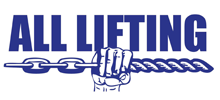
YOUR ESSENTIAL SAFETY GUIDELINES FOR WORKING AT HEIGHT
Working at heights represents some challenges and risks that require careful consideration and following strict safety protocols. Ensuring the safety of workers when operating at elevated levels is paramount to preventing accidents and injuries. To effectively mitigate these risks, it is important to implement comprehensive safety measures and guidelines. Below are some essential tips to guarantee the safety of individuals working at heights:
Thorough Training and Education: Prioritise providing thorough training and education to all personnel involved in tasks at heights. This includes comprehensive instruction on proper equipment usage, hazard recognition, emergency procedures, and fall prevention techniques. Foster a culture of continuous learning and improvement by providing ongoing training and education on safety best practices and procedures. Encourage feedback from workers to identify areas for enhancement and refinement.
Rigorous Hazard Assessment: Conduct a detailed assessment of the work environment to identify potential hazards and risks associated with working at heights. This includes analysing factors such as unstable surfaces, environmental conditions, and the presence of obstacles.
Usage of Appropriate Equipment: Ensure that workers are equipped with the necessary safety gear and equipment designed for working at heights. This includes harnesses, lanyards, anchors, and other fall protection devices that meet industry standards and regulations.
This includes checking for signs of wear and tear, damage, or defects that may compromise safety.
Clear Communication and Planning: Promote open communication and collaboration among team members involved in tasks at heights. Develop clear plans and procedures for executing work activities, including emergency protocols and rescue plans in the event of an incident.
Compliance with Regulatory Standards: Stay informed and compliant with relevant regulatory standards and guidelines governing work at heights, such as those set forth by OSHA (Occupational Safety and Health Administration) or other regulatory bodies.
Risk Mitigation Strategies: Implement proactive risk mitigation strategies to minimise the likelihood of accidents and injuries when working at heights. This includes measures such as installing guardrails, using aerial lifts or scaffolding, and employing engineering controls to reduce fall hazards.
Regular Equipment Inspection and Maintenance: Establish a routine inspection and maintenance schedule for all safety equipment to ensure proper functionality and reliability.
By prioritising safety, organisations can effectively mitigate risks and ensure the well-being of workers when operating at heights. Investing in comprehensive safety measures not only protects individuals from harm but also enhances productivity and fosters a positive work environment. At All Lifting, we offer a comprehensive range of fall protection and arrest solutions, including temporary and permanent lifeline systems, rigid track anchor systems, full-body harnesses, retractables, energy-absorbing ropes, ladder climbing systems, and mobile fall protection systems. If you are looking to start a job or just looking to improve your safety gear, don’t hesitate to contact us and one of our experts will be happy to help you.



